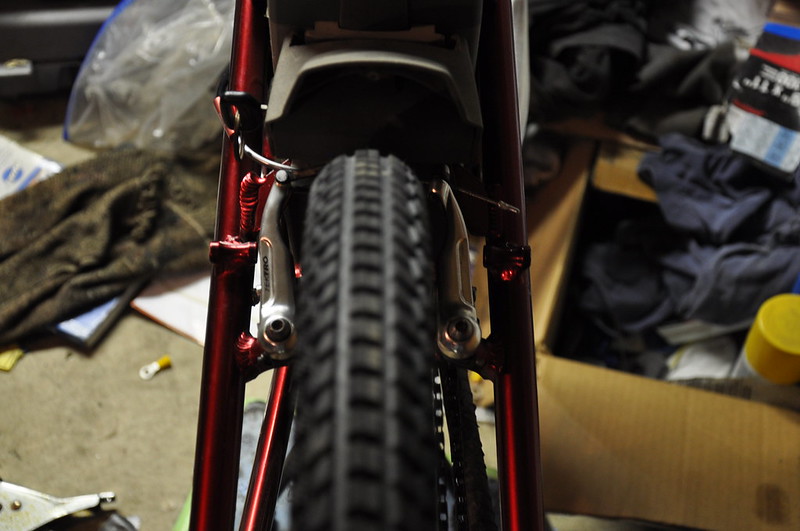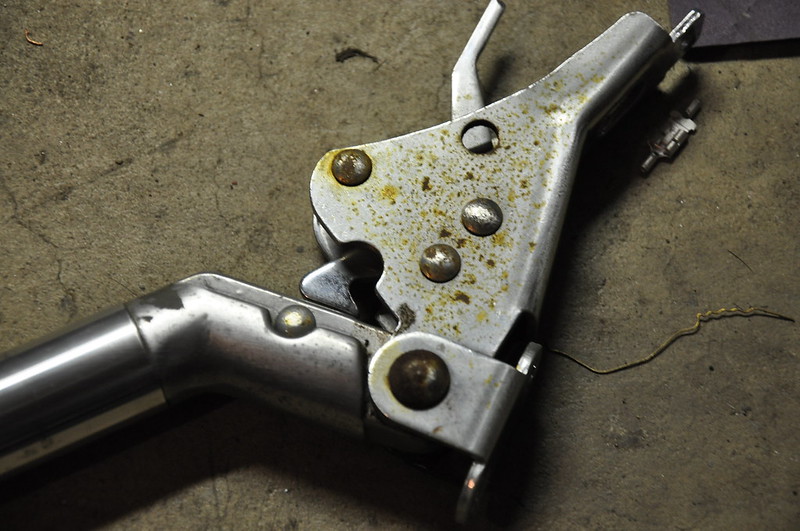Saving a Giant Lafree
- Thread starter SaxMan
- Start date
Saddle:

DSC_2234 by onyxsax, on Flickr
Close enough to finishing to put a bell and GPS mount on the handlebars:
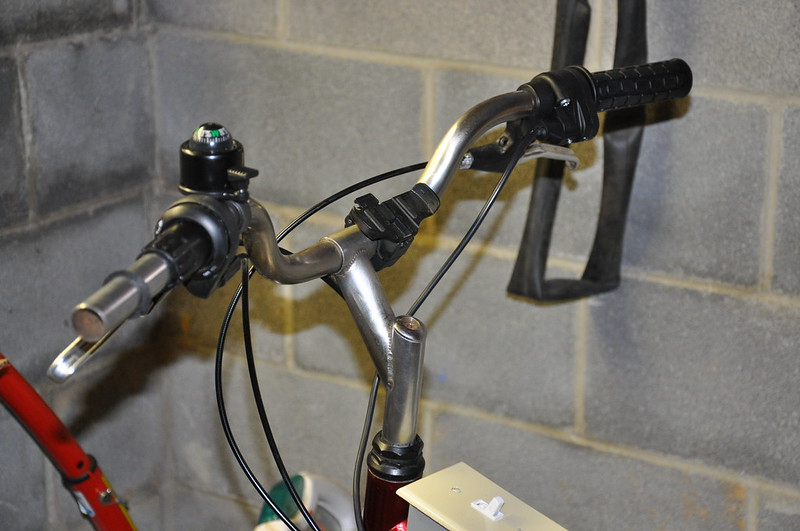
DSC_2237 by onyxsax, on Flickr
Rear fender reattached:

DSC_2238 by onyxsax, on Flickr
Saddle, seatpost and pannier reinstalled and looking more and more like a LaFree again:
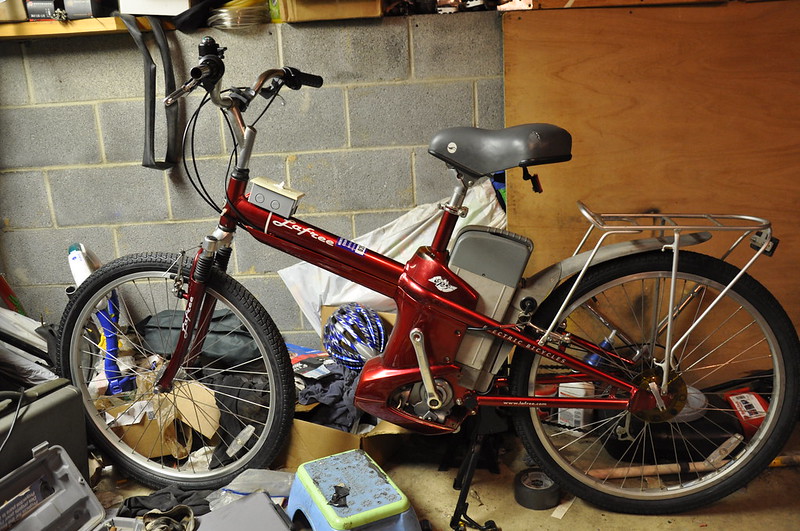
DSC_2245 by onyxsax, on Flickr

DSC_2234 by onyxsax, on Flickr
Close enough to finishing to put a bell and GPS mount on the handlebars:

DSC_2237 by onyxsax, on Flickr
Rear fender reattached:

DSC_2238 by onyxsax, on Flickr
Saddle, seatpost and pannier reinstalled and looking more and more like a LaFree again:

DSC_2245 by onyxsax, on Flickr
Ditto. For a bike of that age it's already looking very smart Saxman. Great restoration job.Enjoying your progress reports very much - please keep up the good work!
Except for the motor covers, which were very rusty, the bike is now complete. I'm not sure why Giant made these parts from metal when plastic literally abounds on this bike. Even without the covers, the bike is ready to begin test rides.
On a quick spin up and down the driveway, I found the bikes pedelec character is still very present: This bike needs you to pedal to get it going, with the motor providing additional assist. At this point, it doesn't seem capable of running solely on its motor (well, not very fast or very well), but the test rides will definitely reveal more of its character.
On a quick spin up and down the driveway, I found the bikes pedelec character is still very present: This bike needs you to pedal to get it going, with the motor providing additional assist. At this point, it doesn't seem capable of running solely on its motor (well, not very fast or very well), but the test rides will definitely reveal more of its character.
I took the bike out for its first genuine test ride this evening. There are a few adjustments that I'm going to need to make, but overall a successful ride. The bike is definitely not as fast as I had thought it was going to be. In fact, over the same course that I rode tonight, I am faster on a conventional bike.
However, the reason for this bike's restoration is not to go fast, but for patrol and observation. It has very stable and predictable ride qualities with a nice upright riding position. Its lack of speed means it can operate alongside patrollers on regular bikes. In short, it is the perfect platform for volunteer patrol role.
I found the bike was capable of about 15 mph on level ground. The best I could get on a downhill was about 24 mph. It is a slug on the uphills. It will climb without pedal assist, although very, very slowly. It definitely prefers to be pedal assisted than running on motor alone.
However, the reason for this bike's restoration is not to go fast, but for patrol and observation. It has very stable and predictable ride qualities with a nice upright riding position. Its lack of speed means it can operate alongside patrollers on regular bikes. In short, it is the perfect platform for volunteer patrol role.
I found the bike was capable of about 15 mph on level ground. The best I could get on a downhill was about 24 mph. It is a slug on the uphills. It will climb without pedal assist, although very, very slowly. It definitely prefers to be pedal assisted than running on motor alone.
Nice restoration. Can I ask ... what did you use to remove the corrosion on the seat tube ? There's a 10-year old bike in the garage which was only ever ridden for less than a mile, and the only thing wrong with it is some corrosion on the handlebars which looks a bit like the stuff on your photo.
I'm not after spending any money on it before it gets sold off (only a small womens' mountain bike which no-one here is going to ride) but would be nice to get it looking in mint condition.
I'm not after spending any money on it before it gets sold off (only a small womens' mountain bike which no-one here is going to ride) but would be nice to get it looking in mint condition.
I use 3M sanding blocks. I try to get away with the least aggressive grit that will still take off the rust. On the seat tube, I was using 600 - 1000 grit. On the handlebars and stem, I had to use more aggressive 120 / 240 grit. The motor covers, which are the last thing that need to be restored, I've actually had to go to 60 grit. Once you do get the rust off, you then go over the surface with progressively finer grit to smooth out the scratches. I usually stop at 1200 grit. For tough to reach areas, I will use a Dremel with grinding stone at the lowest rpms.Nice restoration. Can I ask ... what did you use to remove the corrosion on the seat tube ? There's a 10-year old bike in the garage which was only ever ridden for less than a mile, and the only thing wrong with it is some corrosion on the handlebars which looks a bit like the stuff on your photo.
I'm not after spending any money on it before it gets sold off (only a small womens' mountain bike which no-one here is going to ride) but would be nice to get it looking in mint condition.
The old guys, in my motorcycling days in the 1970's, used a milk bottle top & spit to shift light surface rust from chrome:
I guess aluwilliam foil should do it.
I guess aluwilliam foil should do it.
Second test ride this evening went much smoother. I put the bike up some of the steepest hills in our area (I live in a fairly undulating section of piedmont). The bike made it up the hills with pedal input, as a pedelec should. The pace was fairly slow on the hills, but the amount of human effort to help the motor was manageable. I didn't even work up a sweat. About the only thing left to test is the battery life.
Test rides are continuing and the bike continues to perform satisfactorily. I'm watching the battery voltage. Even though I'm only at 23 volts (from a start of 25.6) the bike does feel slower (and it's already a bit of a lead sled). How far down could I / should I let the batteries go in terms of voltage before a recharge?
Lead acid batteries like "cycling", i.e. charging frequently, but that said don't worry about using all the available current. Due to a phenomenon called the Peukert effect, the batteries can only supply a proportion of their content at the high discharge rates of e-bikes. So you can run until it cuts out, but the battery will still have up to half it's content that could be used more gently such as in lighting a couple of bulbs for example. Therefore running to cut-off won't harm it.
Not yet...but soon. I'm finishing up repainting the motor covers. I'll probably take some pictures during its service trials.Hi SaxMan,
Any out and about photo's of your bike showing off your fine city?
After a long, cold and unusually snowy winter in the Washington, D.C. area, the LaFree finally saw its service debut with the Maryland-National Capital Park Police this past weekend during Volunteer Bike Training. It's proven to be a steady and predictable mount, if a bit sluggish due to its heft.
Here it is being put through its paces in the cone courses:
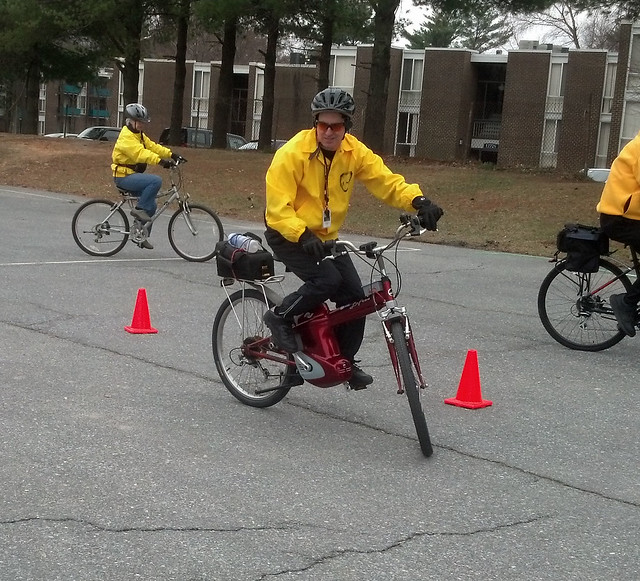
IMG_20140323_113133_287a by onyxsax, on Flickr
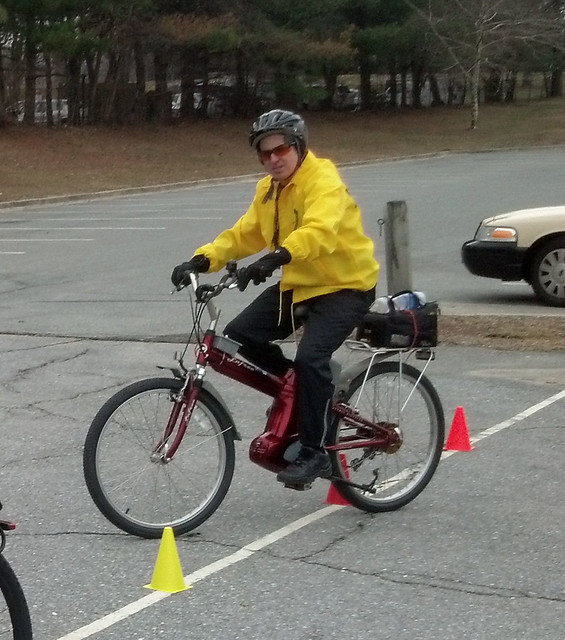
IMG_20140323_113250_927a by onyxsax, on Flickr
Next step is actual field work. It will be used for a large community detail at one of our regional parks in two weeks.
Here it is being put through its paces in the cone courses:

IMG_20140323_113133_287a by onyxsax, on Flickr

IMG_20140323_113250_927a by onyxsax, on Flickr
Next step is actual field work. It will be used for a large community detail at one of our regional parks in two weeks.
Related Articles
-
 MTF Enterprises announces acquisition of EMU Electric Bikes
MTF Enterprises announces acquisition of EMU Electric Bikes- Started by: Pedelecs
-
 Wisper 806T folding bike wins Which? ‘Best Buy’
Wisper 806T folding bike wins Which? ‘Best Buy’- Started by: Pedelecs
-
 Sustrans calls for protected cycle lanes
Sustrans calls for protected cycle lanes- Started by: Pedelecs
-
 Amazon launch their first UK e-cargo micromobility hub
Amazon launch their first UK e-cargo micromobility hub- Started by: Pedelecs



